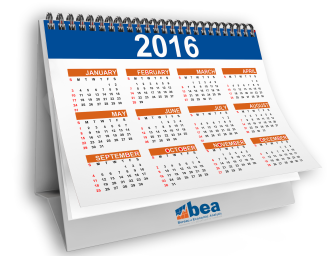 As BEA marches toward 2017, here are just a few highlights from 2016, part of continuous efforts to help businesses and the American public better understand the performance of the nation’s dynamic economy.
As BEA marches toward 2017, here are just a few highlights from 2016, part of continuous efforts to help businesses and the American public better understand the performance of the nation’s dynamic economy.
On the international front, geographic coverage for BEA’s annual trade in services statistics nearly doubled from 49 countries and country groupings to 90 in a move to provide more detailed U.S. export and import data on a country-by-country basis. Now you can find international services data for Greece, Vietnam, Russia, Austria, Colombia, and many more with preliminary statistics for 2015.
BEA released updated first-of-their kind national health care statistics, detailing how much is spent in the United States to treat different diseases and medical conditions, as well as information on health care prices over time. BEA also released a fresh batch of national statistics showing the impact of arts and culture on the U.S. economy and produced inflation-adjusted statistics for the first time.
As part of ongoing efforts to enhance our initial, or “advance” estimates of quarterly GDP, BEA in late July began including three full months of retail and wholesale inventories data into this first GDP estimate. Before the Census Bureau provided faster access to these data, BEA could incorporate only two months of inventories data into its first estimate of GDP.
BEA’s cycle of GDP updates reflects a dedication to timeliness, accuracy and completeness. BEA released the annual update to gross domestic product in July, which incorporated new and more comprehensive source data. This animated video and blog post explain why GDP numbers can change.
On the regional data front, BEA economists explored how to produce county-by-county GDP statistics, a project that would provide a richer picture of the U.S. economy. Statistics showing the economic activity generated by the nation’s more than 3,000 counties would shed light on areas not covered by BEA’s state and metropolitan area statistics.
To make our data even more assessable, BEA launched two new open-source tools in 2016. bea.R, an open-source “library” for users to search, crunch, and visualize BEA’s national, regional and local economic statistics, was developed for use with the R programming language. The eu.us.opendata R library — BEA’s second open-source data tool — helps users access, compare, and visualize harmonized BEA and Eurostat datasets. To access both libraries, visit the BEA Developers page.
What’s next for BEA in 2017? Check out some data projects, and be sure to follow the BEA blog and Twitter feed for the latest data and news.